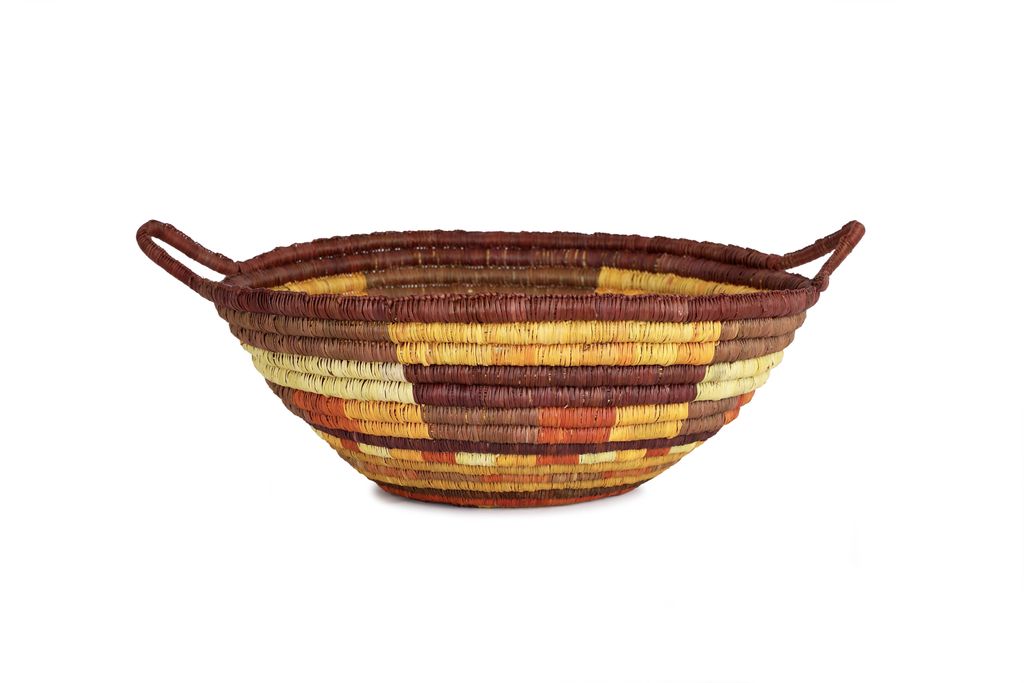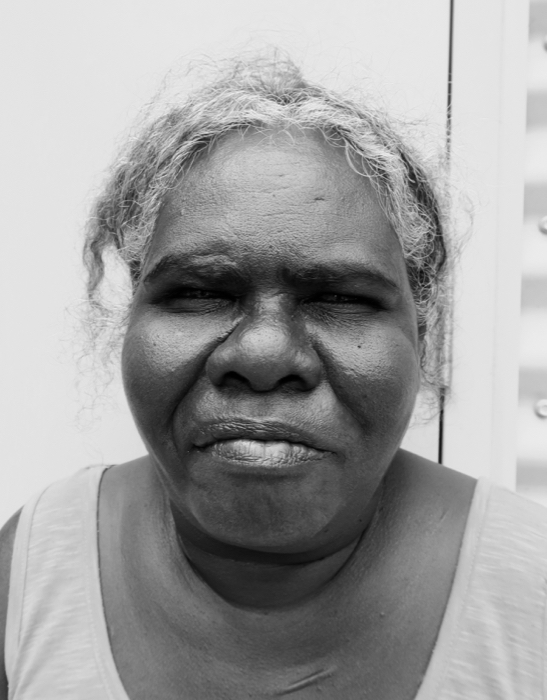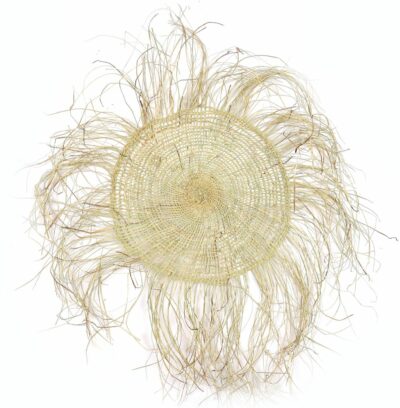Description
nyedilmiwuy munyarryun
Gunga (Pandanus Spiralis) and natural dyes
21cm x 56cm
Year: 2024
ID: 3789-24
Bathi
The age old practice of weaving baskets from the leaves of Pandanus continues today. Making these things is very labour intensive. Gathering the materials can be quite exhausting. The spiky pandanus leaves are sometimes difficult to harvest, followed by the careful task of flaying the leaves before hanging them to dry.
Only the few central leaves of the palm growing from the core which have not bent are used. These can be ten or twenty feet high so a special crook known as a Galpuŋaniny must be used to work these out of the growing tree. The pandanus (known as Gunga- Pandanus Yirrkalaensis) recovers completely but cannot be reharvested for some months.
The dyes used are from the bulbs, roots or bark of various woodland plants. Each of these plants only grow in different specific locations. Once the material is collected, trimmed, dried and dyed the weaving begins. This is almost always done by women in groups. Men have been known to weave ceremonial or sacred objects but these are not for sale.
Some of the plants used for dyeing are; Yiriŋaniny which is a small grass like plant with a red bulb under the ground, Burukpili (Cheesefruit/Noni) whose root gives a yellow dye. These and others are used with various catalysts like the ash from particular plants to create endless variations of colour. It is said that the practice of dyeing rather than painting fibrework with ochres is a practice that spread from the West but no time is specified.
Circular and conical mats were a mainstay of Yolŋu family life in pre-contact times. As well as being used in ceremonial contexts they were useful for sitting, sleeping and child minding. Close weave conical mats kept mosquitoes at bay in the Wet. In ceremonial song the mat can correlate to the creation of life including the Sun as the ultimate source of all life. This form of coil weaving probably came with missionaries from the 1930s on as a style borrowed from the Ngarrindjeri from the Coorong. Yolŋu call these Bathi which means basket.






Reviews
There are no reviews yet.